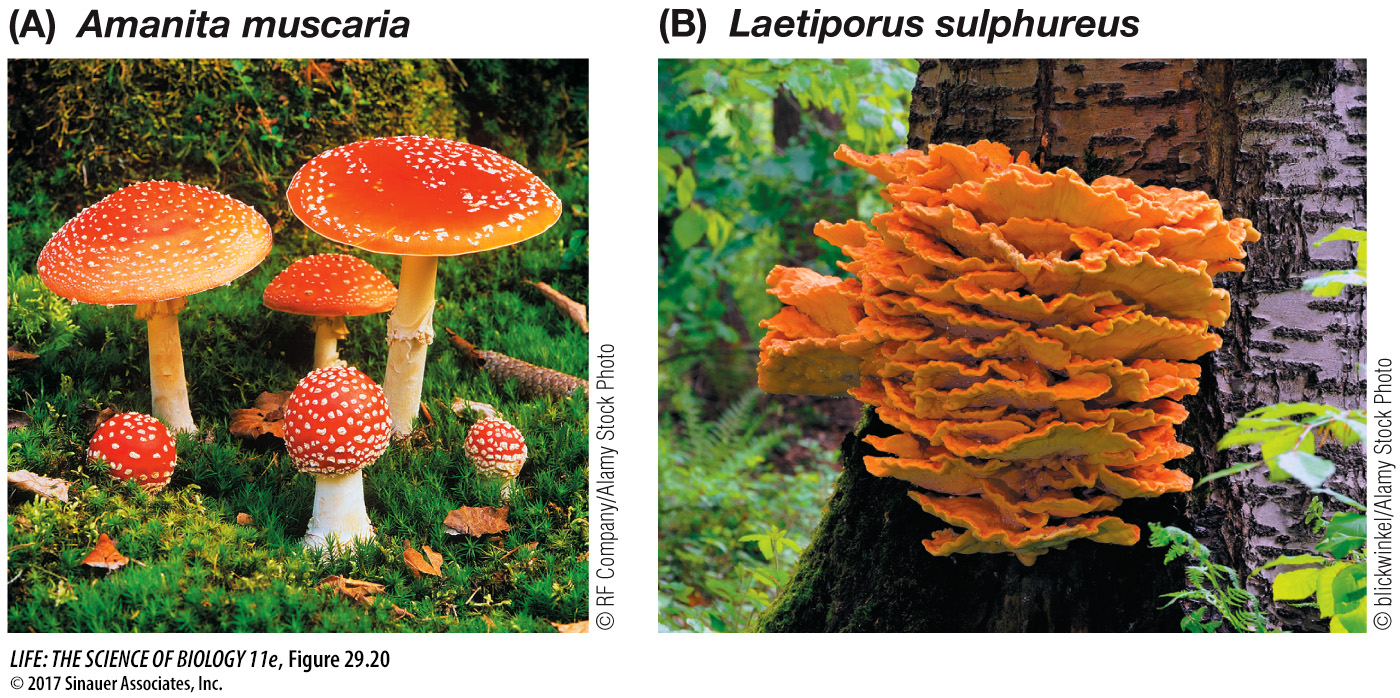The basidium is the sexual reproductive structure of club fungi
Club fungi (Basidiomycota) produce some of the most spectacular fruiting structures found among the fungi. These fruiting structures, called basidiomata (singular basidioma), include mushrooms of all kinds, puffballs (see Figure 29.4), and the bracket fungi often encountered on trees and fallen logs in a damp forest. About 30,000 species of club fungi have been described. They include about 4,000 species of mushrooms, including both poisonous and edible species (Figure 29.20A). Bracket fungi (Figure 29.20B) play an important role in the carbon cycle by breaking down wood. They also do great damage to both cut lumber and timber stands. Some of the most economically damaging plant pathogens are club fungi, including the rust fungi and smut fungi that parasitize cereal grains. In contrast, other club fungi contribute to the survival of plants as fungal partners in ectomycorrhizae.

The hyphae of club fungi characteristically have septa with small, distinctive pores. As they grow, haploid hyphae of different mating types meet and fuse, forming dikaryotic hyphae, each cell of which contains two nuclei, one from each parent hypha. The dikaryotic mycelium grows and eventually, when triggered by rain or another environmental cue, produces a basidioma. The dikaryon stage may persist for years, or even centuries. This pattern contrasts with the life cycle of the sac fungi, in which the dikaryon is found only in the stages leading up to formation of the asci.
The basidium (plural basidia), a swollen cell at the tip of a specialized hypha, is the characteristic sexual reproductive structure of the club fungi (see Figure 29.17B). In mushroom-
After nuclei fuse in the basidium, the resulting diploid nucleus undergoes meiosis, and the four resulting haploid nuclei are incorporated into haploid basidiospores, which form on tiny stalks on the outside of the basidium. A single basidioma of the common bracket fungus Ganoderma applanatum can produce as many as 4.5 trillion basidiospores in one growing season. Basidiospores typically are forcibly discharged from their basidia and then germinate, and give rise to hyphae with haploid nuclei.